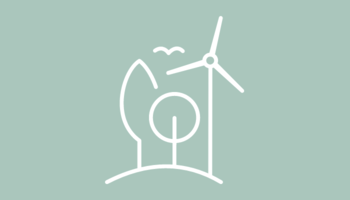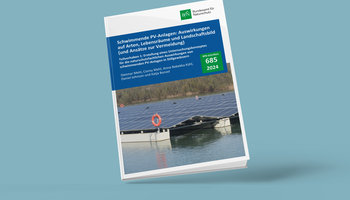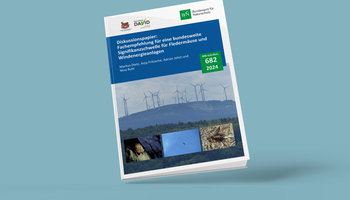With BirdRecorder, a powerful detection system for bird species sensitive to wind power was developed and tested. The system is initially designed for the detection of red and black kites. As an independent research module, the R&D project is technically related to the nature conservation research at the NatForWINSENT wind test site (FKZ 3518 86 0100) in the Swabian Alb.
BirdRecorder combines modern (stereo) camera technology with machine learning (artificial intelligence, AI) to reliably record and recognise bird species sensitive to wind power in the direct vicinity of wind turbines. A set of cameras is used for real-time detection of birds. The range of the system is up to 700 metres. If a moving object is detected in the airspace around a wind turbine within this radius, it is classified using AI methods in two steps to decide whether it is a) a bird or an aircraft etc. and b) whether the bird belongs to the kite species group.
During the project, the AI models were trained with about 680,000 images recorded on the wind energy test field of the Centre for Solar Energy and Hydrogen Research Baden-Württemberg (ZSW) in Stötten over a period of two years. This contains approximately 420,000 images of birds, which in turn were manually annotated by ornithologists according to species and species groups, including 72,000 images for the kite species group. The first AI model of the BirdRecorder thus recognises 99 % of the birds in step a). The second AI model for classifying the kite species group can distinguish kites from other birds with an accuracy of 93.1 % in step b) on the basis of individual images. If the AI can draw on image series, the recognition probability increases to over 98 % after only a few seconds.
Once a kite has been detected, the bird's flight is tracked with a pair of trackable stereo cameras. The flight path of the bird is measured in real time and with an accuracy of a few metres. If the bird approaches a wind turbine, for example, the turbine can be switched to spin mode, thus eliminating any danger to the bird.
A video of the single image classification is available on Youtube for a period of time from dawn until later in the morning.
In the R&D project, 2 prototypes were built and tested. Further development of the system and extensions to include nocturnal birds and bats - Bird- und Batrecorder BBR 2.0 - started in January 2023.
Project Management
Anton Kaifel
Zentrum für Sonnenergie- und Wasserstoff-Forschung Baden-Württemberg ZSW)
Meitnerstraße 1, 70563 Stuttgart
anton.kaifel(at)zsw-bw.de
Federal Agency for Nature Conservation
Leipzig Branch
Alte Messe 6, D-04013 Leipzig
Jens Ponitka
jens.ponitka(at)bfn.de
03.04.2024
Weiter

03.04.2024
Weiter

19.03.2024
Weiter
